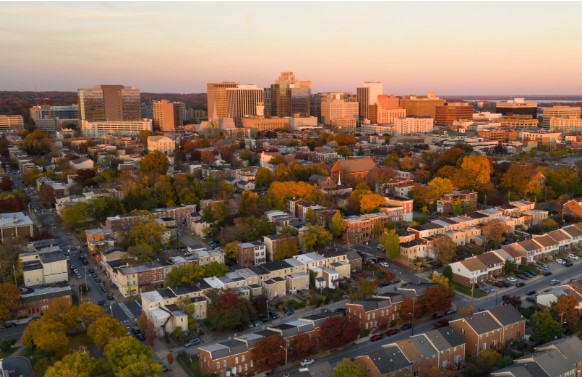3.5 Million Homes Short: A Critical Look at America’s Housing Crisis
Originally Published by: Up For Growth — October 29, 2024
SBCA appreciates your input; please email us if you have any comments or corrections to this article.

Up for Growth, a cross-sector member network committed to solving the nation’s housing shortage and affordability crisis through data-driven research and evidence-based policy, today released its third annual report, Housing Underproduction in the U.S. 2024, a longitudinal study tracking housing underproduction – the gap between the housing we have and the housing we need.
Up for Growth’s most recent findings show nationwide underproduction reached 3.85 million homes in 2022. However, for the first time in more than a decade, housing underproduction decreased by 50,000 homes. This slight improvement was driven by low interest rates and historic demand for housing as the effects of the coronavirus pandemic began to lessen.
While the total number of missing homes decreased slightly, a regional look at the data suggests larger dynamics are at play. One driver of improvement along the West Coast was reduced demand for housing rather than adequate production. Moreover, the drivers of the housing shortage that have long plagued California and other states in the West are now presenting nearly uniformly in the middle of the country.
The year-over-year stabilization of housing underproduction masks the escalating urgency of the national housing shortage. “On its surface, the leveling of housing underproduction seems like positive news,” said Mike Kingsella, Chief Executive Officer of Up for Growth. “Instead, it illuminates the negative effects of long-term housing shortages along the West Coast. What’s happening in San Francisco should serve as a cautionary tale for metros like Nashville and Houston, which are struggling to adequately meet rising demand.”
The U.S. produced more single-detached homes in 2022 than in any of the 15 previous years, and new apartment construction reached its highest level since 1987. However, Kingsella believes there is ample reason to anticipate that some of the most difficult challenges lie ahead. New data suggests that a large, years-long backlog of multifamily home construction projects has finally been completed. Permits for new multifamily projects began to decline in 2023 and continue to fall dramatically in most metro areas due to high interest rates and escalating construction costs. “We should expect America’s housing shortage to get much worse very quickly without bold, federal interventions,” Kingsella said.
The Report’s findings, which measure housing underproduction from 2021 to 2022, update a 2023 Up for Growth report finding that housing underproduction in the U.S. reached 3.9 million homes in 2021, up from 1.6 million in 2012.
Up for Growth’s most recent report found the following:
Among states
All 50 states have housing underproduction. Housing underproduction worsened in 24 states between 2021 and 2022. The average U.S. state had a housing deficit of 75,000 homes.
The state with the most severe housing gap was California with a shortage of 840,000 homes.
The 10 states with the most severe housing underproduction (underproduced units as a share of total units) were, in order of severity: California, Idaho, the District of Columbia, Utah, Oregon, Washington State, New Jersey, New Hampshire, Colorado and Minnesota.
New Jersey is new to this list. Arizona dropped off, moving from number 9 in 2021 to 13 in 2022.
New Jersey was the biggest mover in terms of severity, up 5 spots to number 7 in 2022.
The 10 states with the highest number of missing units were California, Texas, New York, Florida, New Jersey, Illinois, Washington State, Georgia, Massachusetts and Arizona.
Among metropolitan areas
The total number of metros experiencing underproduction increased from 193 to 198, with 83% (256) of all markets worsening.
- Metros with the highest housing underproduction in 2022 were:
- New York-Newark-Jersey City, NY-NJ-PA
- Los Angeles-Long Beach-Anaheim, CA
- Chicago-Naperville-Elgin, IL-IN-WI
- Riverside-San Bernardino-Ontario, CA
- Washington-Arlington-Alexandria, DC-VA-MD-WV
- Miami-Fort Lauderdale-Pompano Beach, FL
- Dallas-Fort Worth-Arlington, TX
- Atlanta-Sandy Springs-Alpharetta, GA
- Boston-Cambridge-Newton, MA-NH
- Phoenix-Mesa-Chandler, AZ
Chicago moved into the top three metros with the highest housing underproduction for the first time since we began tracking in 2012.
San Francisco dropped out of the top 10, coming in at number 18 behind Seattle, Minneapolis and Detroit.
“Today, not a single state is meeting its housing needs, leaving our nation poorer, less productive, and less resilient,” said Kingsella. “But it is possible to enable the housing market to produce more of the types of homes people want and can afford. Congress must act swiftly on a bold housing supply agenda. We must encourage localities to eliminate outdated and artificial barriers, invest in innovative building technologies, fund community-serving infrastructure and prioritize resources for the production and preservation of affordable homes. Without decisive, sustained federal action, this crisis will only deepen. This is about more than housing—it’s about securing the future of our nation.”
